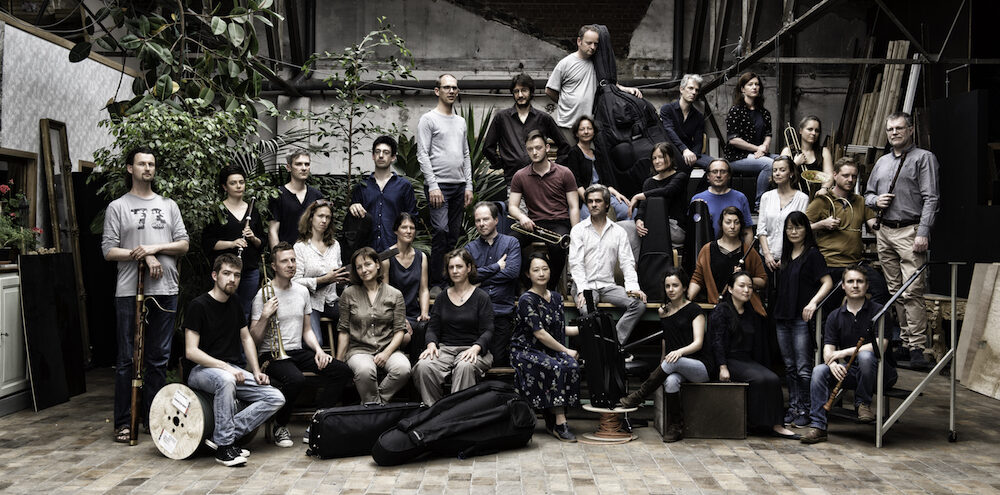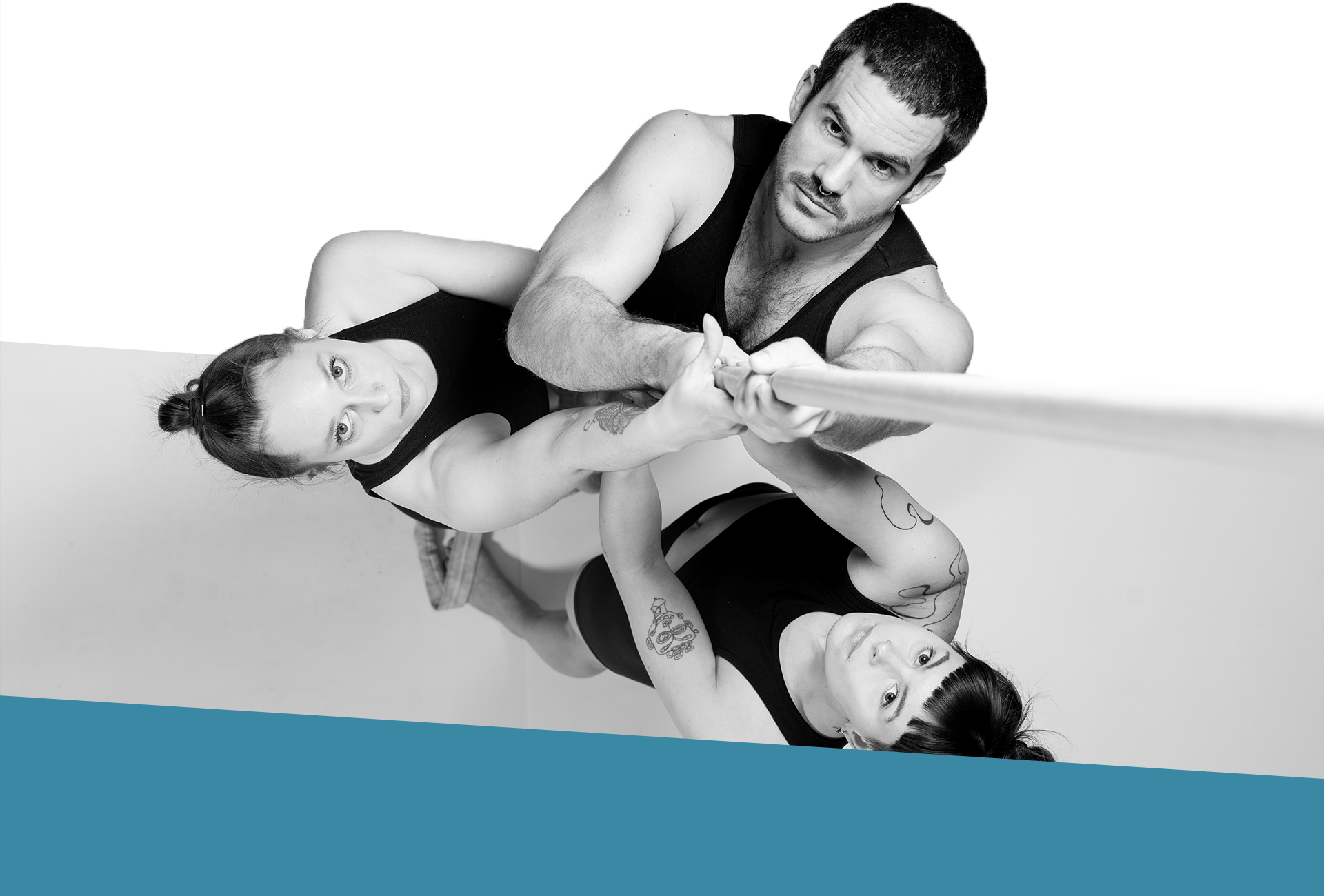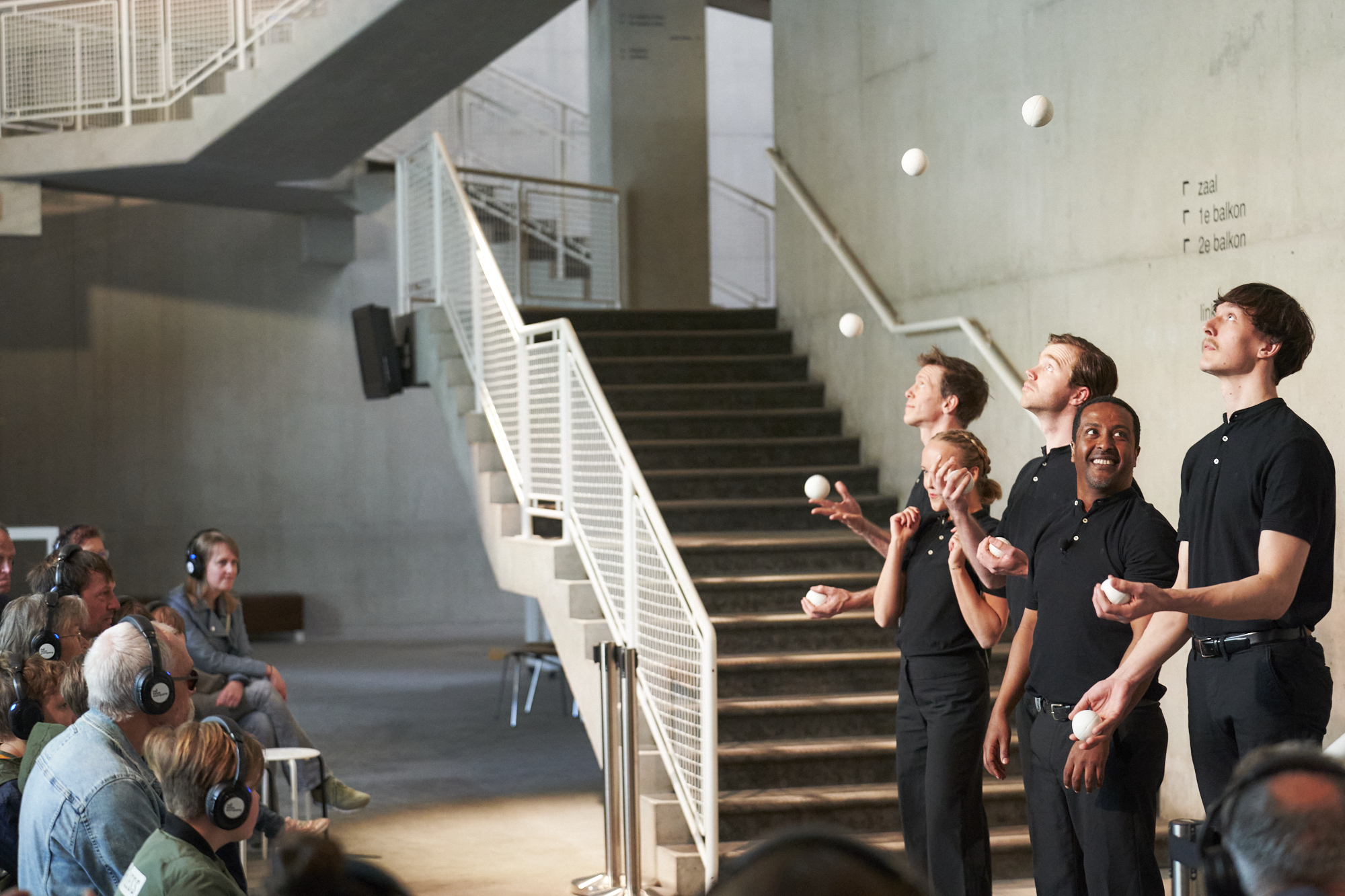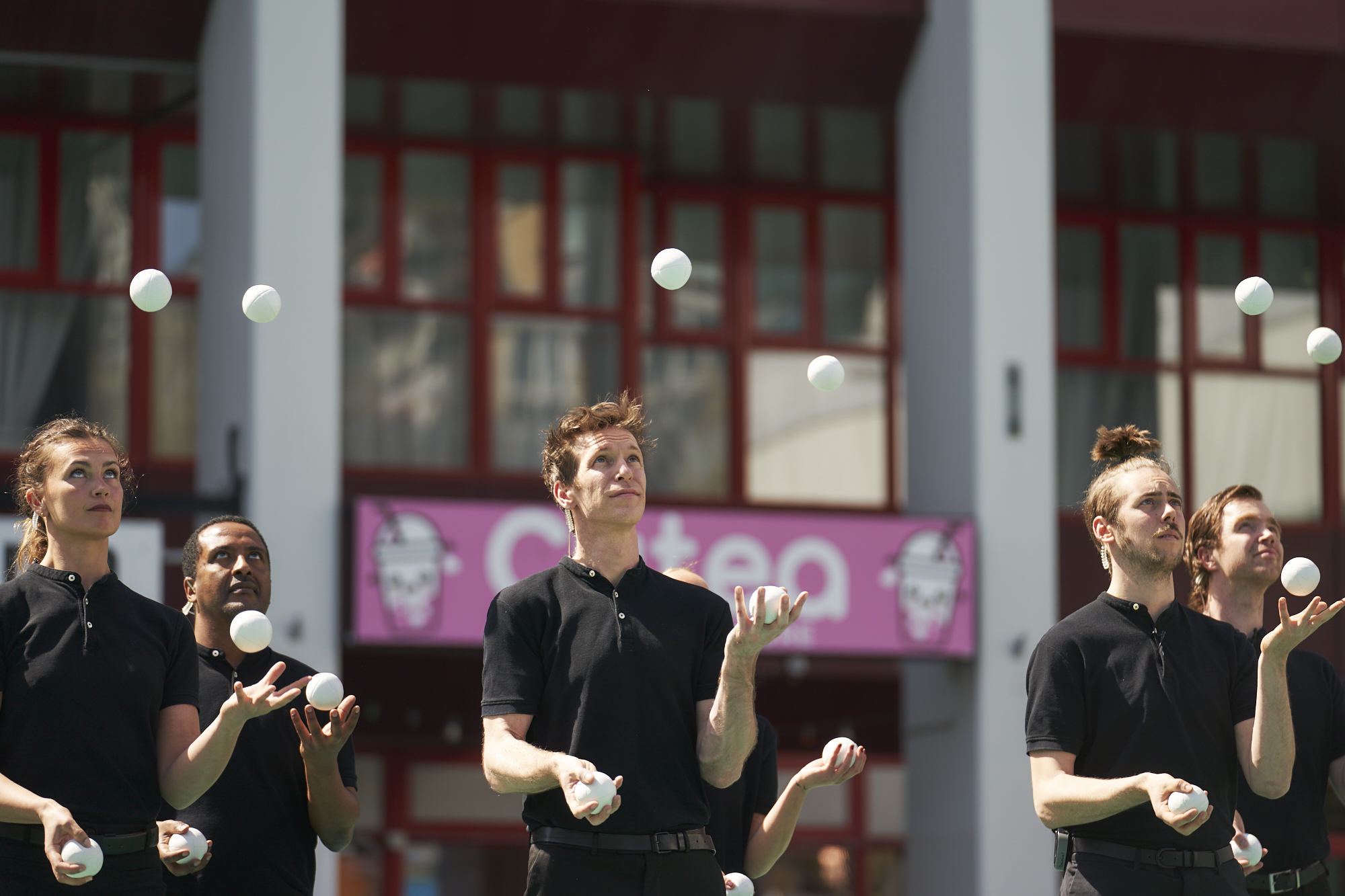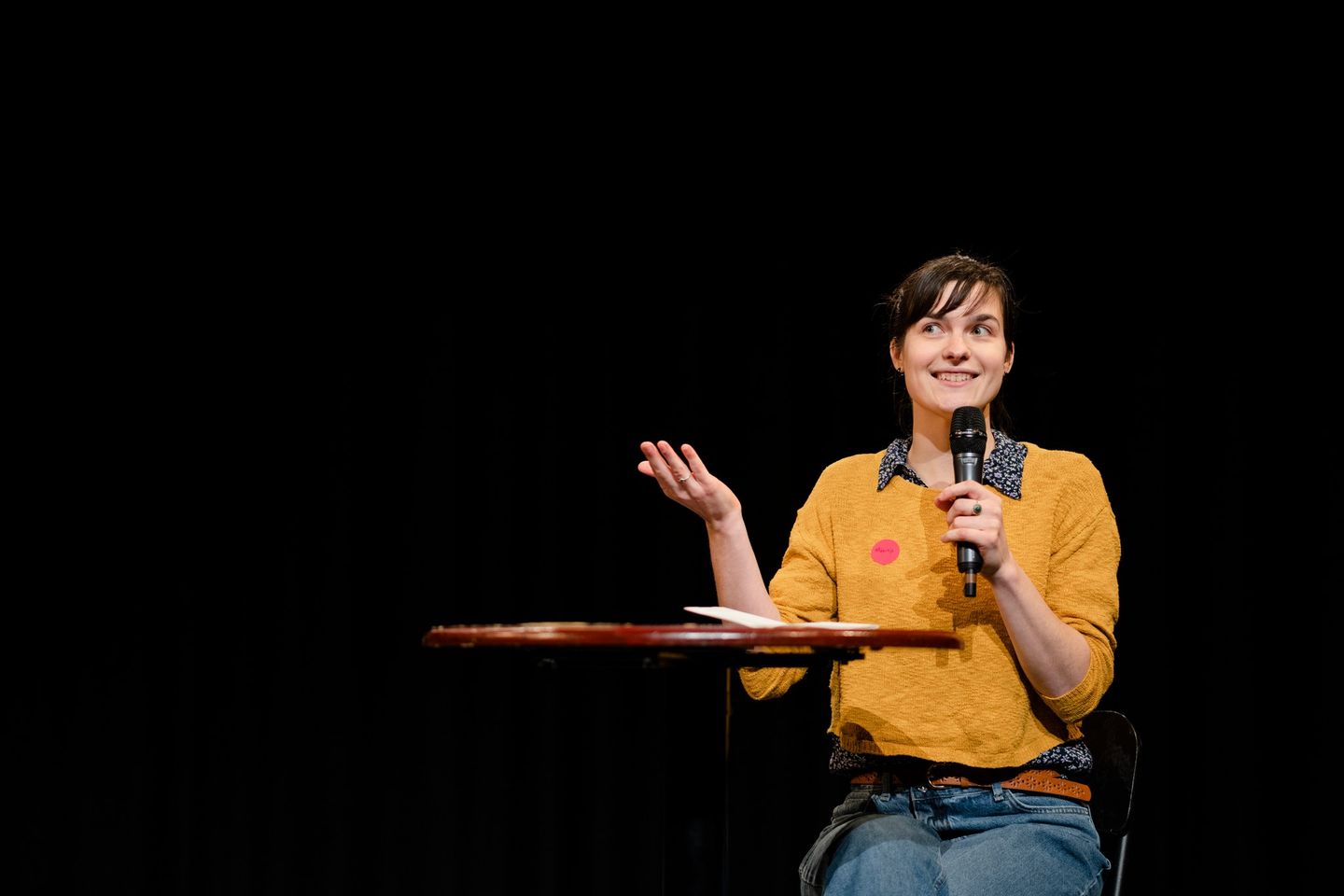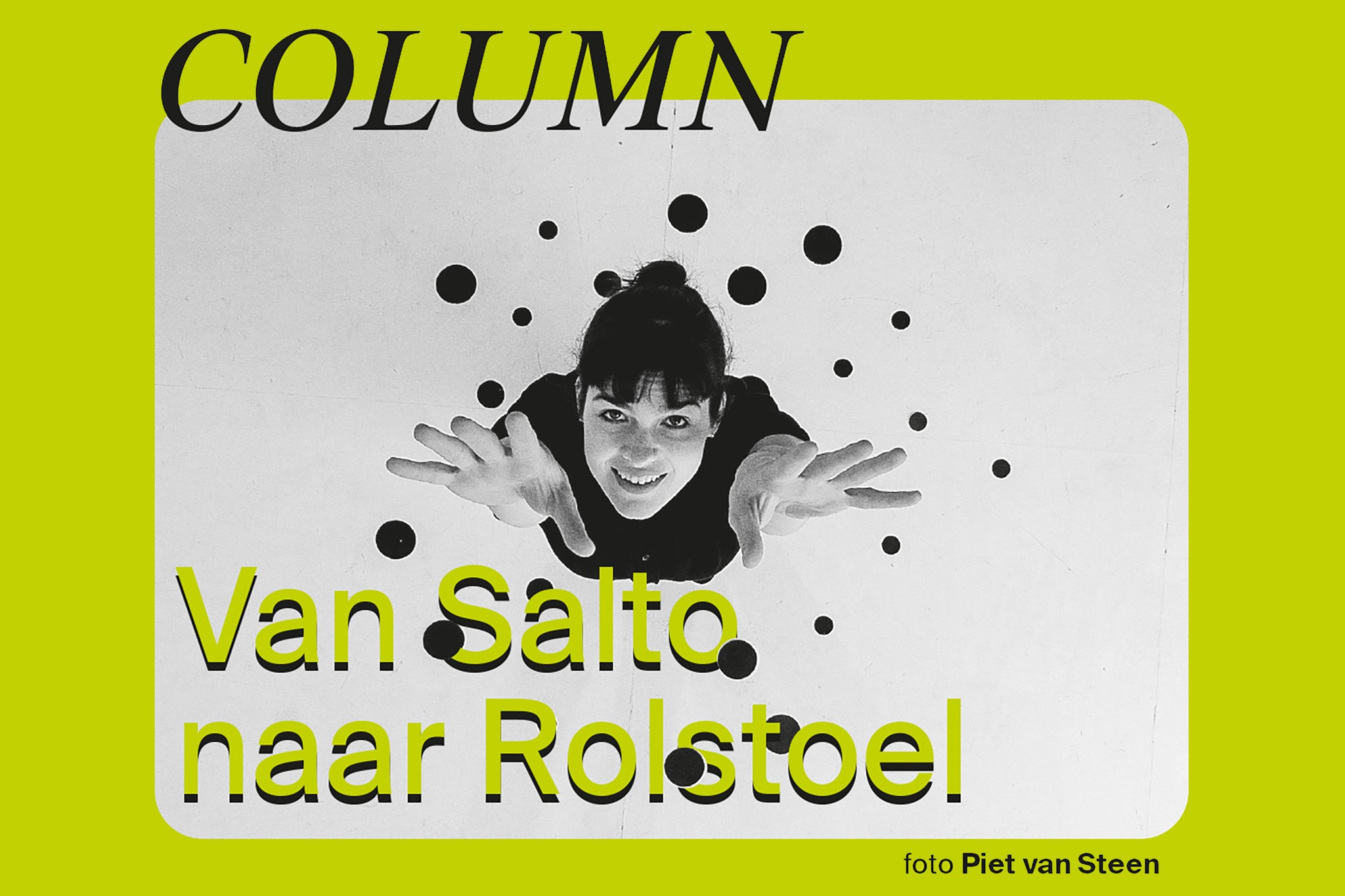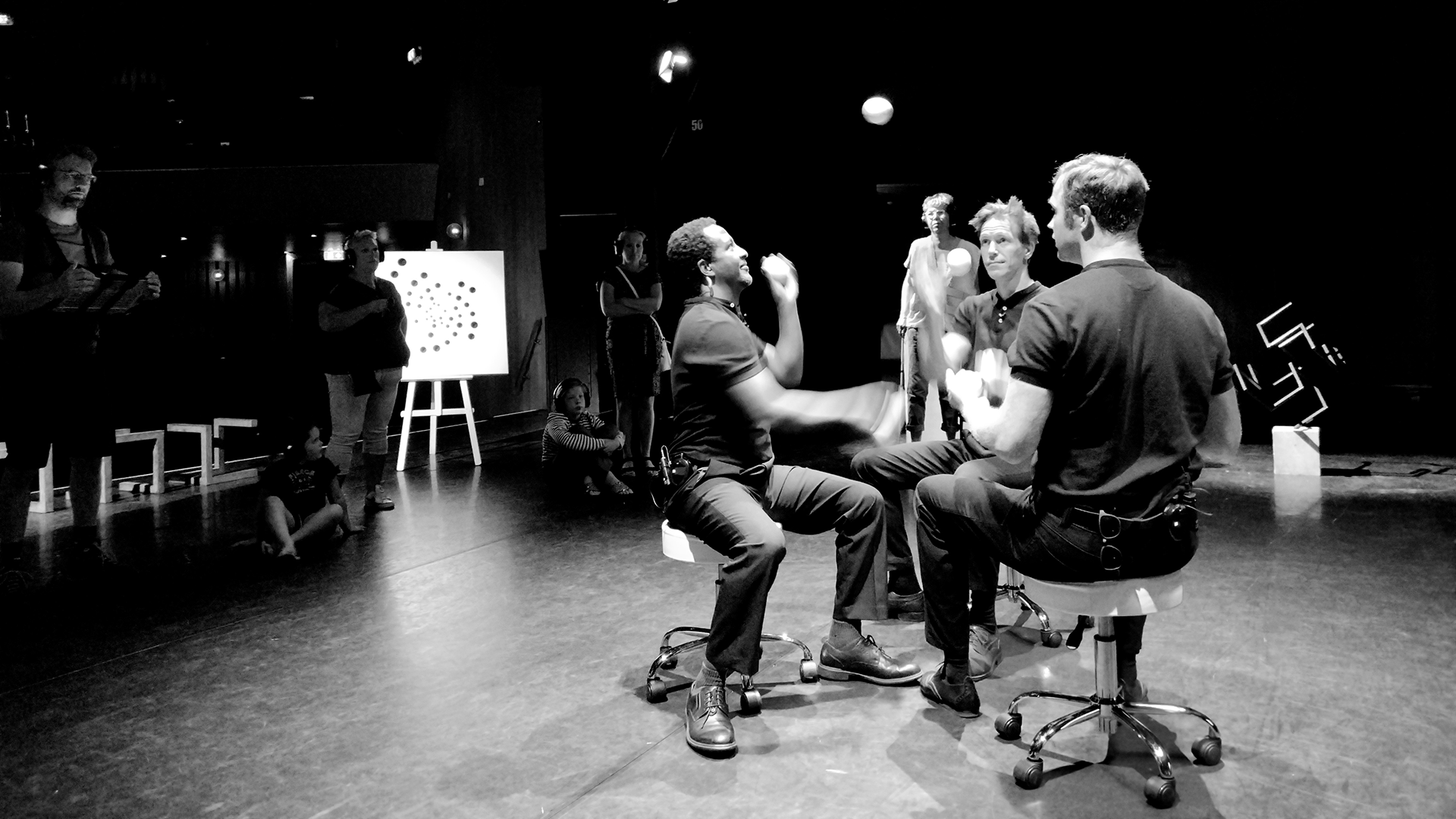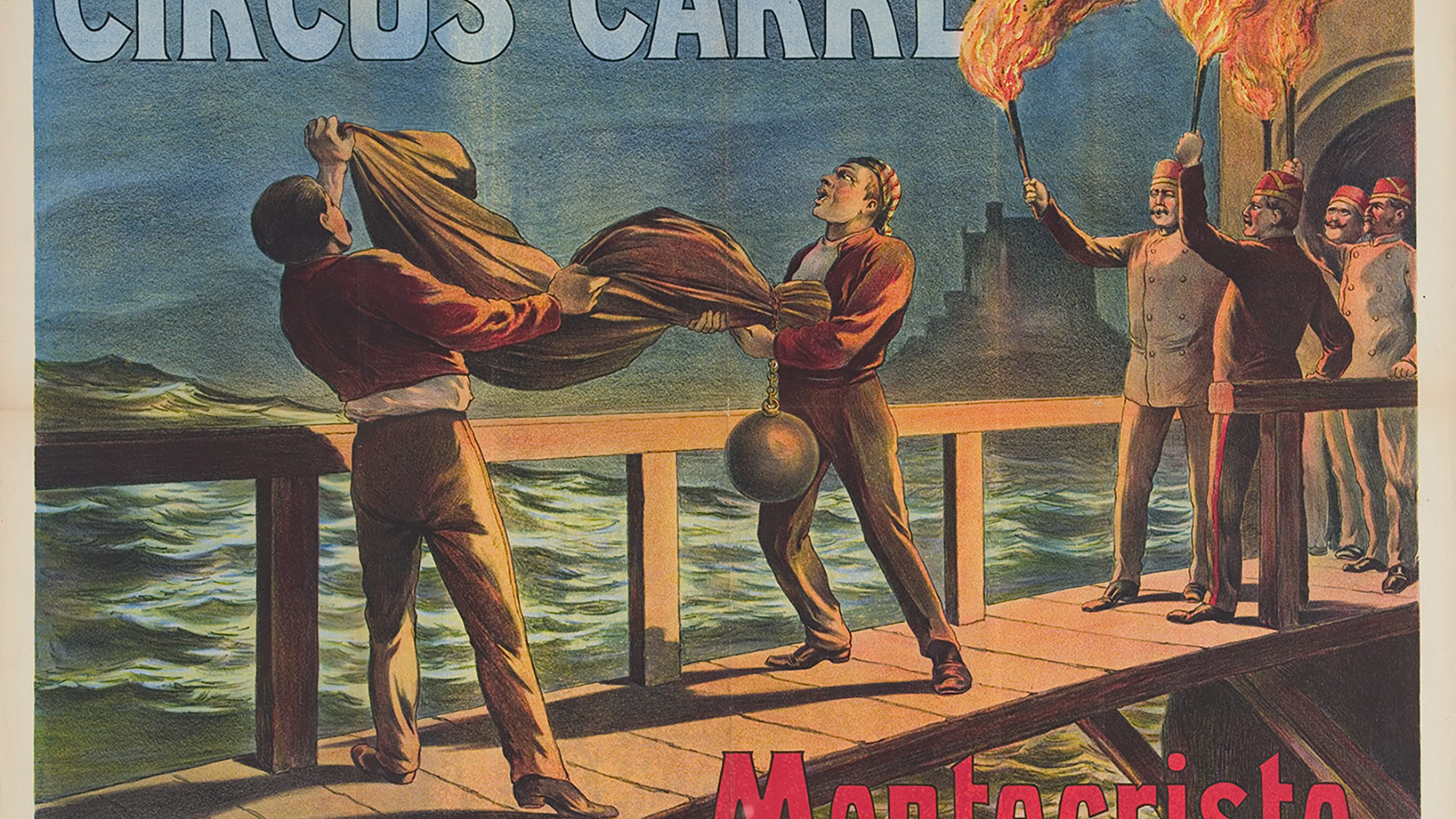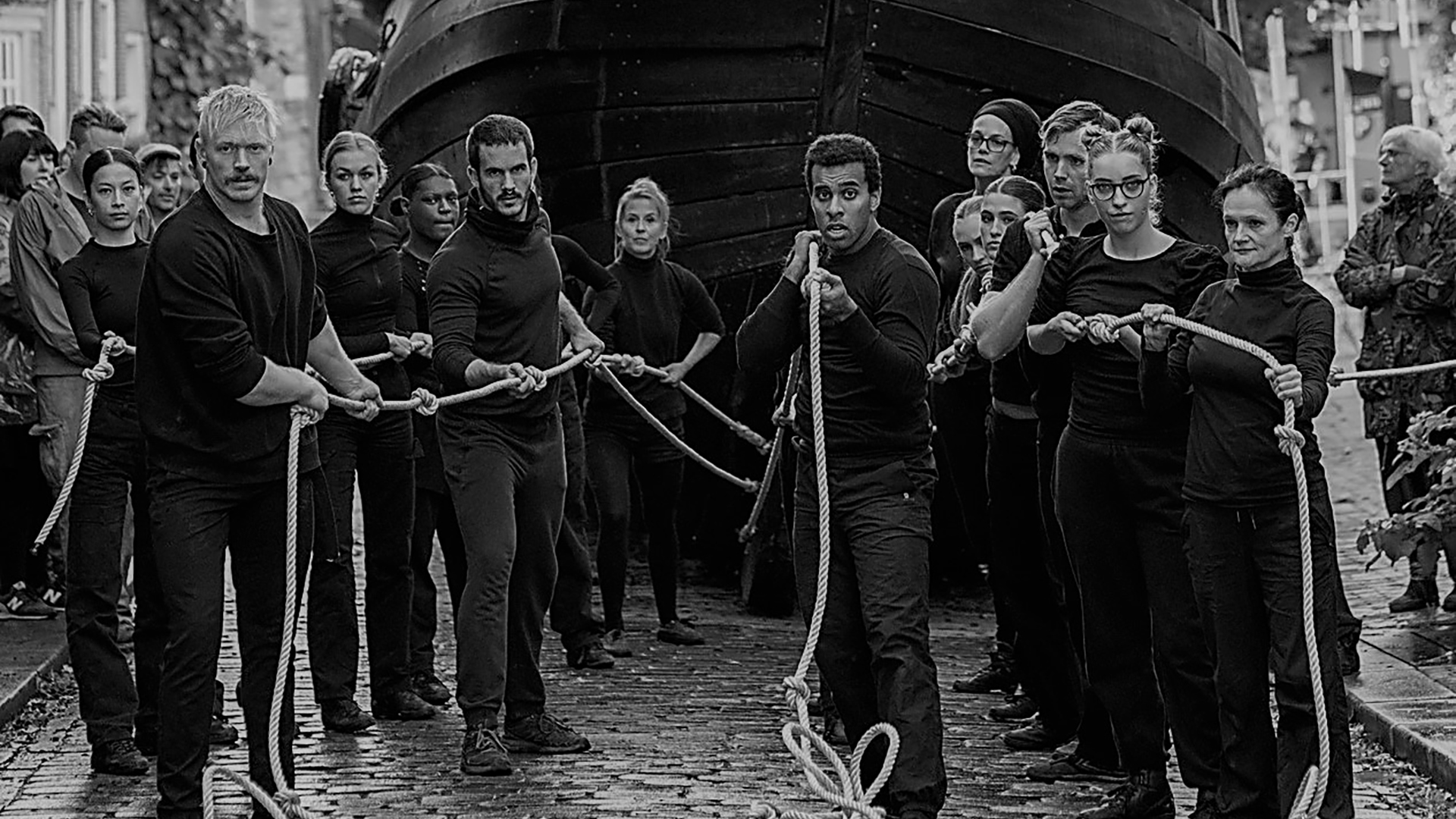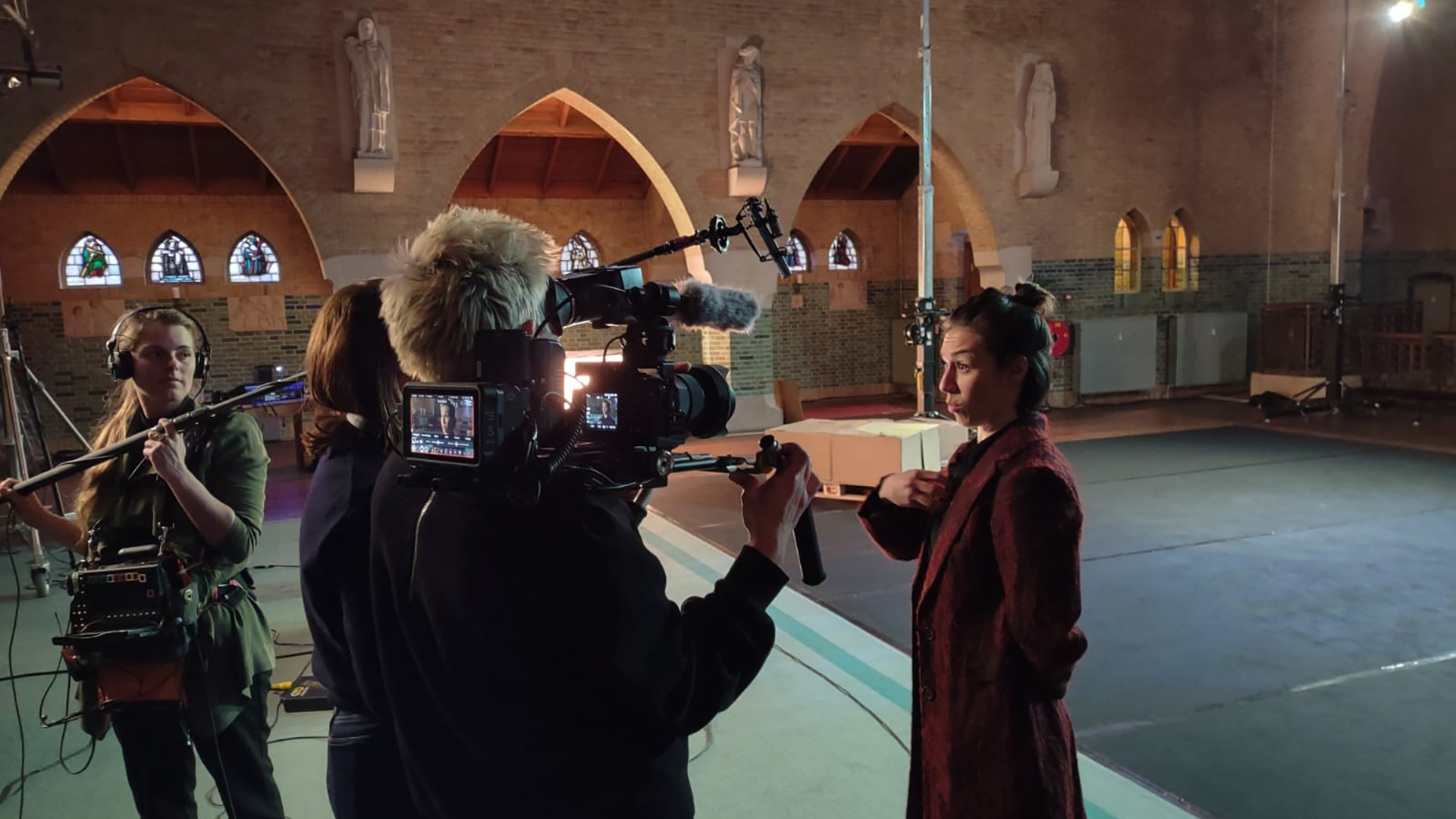Samenwerking met Bachfestival en B'Rock Orchestra
Tall Tales gaat in residentie bij het Bachfestival en opent samen met B'Rock Orchestra & Vocal Consort uit Vlaanderen het festival op vrijdag 21 juni.
Het openingsconcert In Your Hands is een ode aan 300 jaar Johannes-Passion. Onder leiding van gitarist/componist Kalle Kalima wordt een unieke kamerversie gemaakt met slechts vier zangers, strijkers, fluit, vintage synthesizer en elektrische gitaar. De essenties van de geselecteerde aria’s en refreinen worden ondertussen gevisualiseerd in een emotionele taal van beweging, spanning en bevrijding, door vier acrobaten van Tall Tales Company. Een totaal nieuwe muzikale en visuele vertaling.
Misschien gaat Bachs onsterfelijke zetting van Jezus’ laatste dagen in wezen… over ons. Hoewel de muziek en de tekst al eeuwen oud zijn, nodigen ze uit om na te denken over de keuzes die wij in ons eigen leven maken. Hoe nemen we verantwoordelijkheid, hoe zien we onze angsten onder ogen, hoe gaan we om met verlies en hoe dromen we over een toekomst, welke toekomst dan ook?
Tall Tales speelt op 29 juni ook Square Two op het Bachfestival in Dordrecht.
Tickets en programma Openingsconcert en Square Two
Spiegeling is klaar voor de tournee!
In onze nieuwe 30 minuten-durende buitenvoorstelling Spiegeling vertellen drie acrobaten het publiek wat het voor hen betekent om een sterke vrouw of een gevoelige man te zijn. De voorstelling is gebaseerd op persoonlijke anekdotes van de artiesten en is speciaal gemaakt voor publiek dat niet dagelijks met theater in aanraking komt. We spelen de voorstelling onder meer op scholen en tijdens buurtfestivals.
Bekijk de agenda om bij één van de voorstellingen te kunnen zijn!
foto: (c) Bas de Brouwer
Square 10 op Circusstad
Tall Tales Company bestaat 10 jaar en ook Circusstad Festival vierde haar 10e verjaardag!
Dit jaar presenteerden we tijdens Circusstad Festival onze jubileumvoorstelling Square 10, waarin maar liefst tien jongleurs het publiek in tien scènes meenamen op een bijzondere route door Theater Rotterdam waarin zij de geheime codering onthullen achter bijzondere plekken in het theater.
Van harte, Circusstad Festival, het was ons een waar genoegen om onze gezamenlijke verjaardag te vieren!
Recensie in de Volkskrant: “[…] de prachtige patronen van die Tall Tales Company weet te genereren als verlengstuk van alle architectuur blijven je zeker bij.” *** Annette Embrechts, de Volkskrant
Recensie op Circusweb: “[…] de tien jongleurs komen adembenemend dichtbij en zijn onvervalst ‘mens’ in de routevoorstelling. […] en het zet je aan het denken over je eigen identiteit” **** Circusweb
“Square 10 laat je verder kijken dan je neus lang is. Het is een kunstwerk waarbij je beeldende kunst en architectuur ontdekt middels de inzet van circuskunst. En dát terwijl het al die tijd zo dichtbij is geweest.” **** Circusweb
Wil je deze voorstelling ook beleven? De driepersoonsversie van de voorstelling, Square Two is deze zomer weer op tournee langs Europese festivals.
Foto: (c) Jonas Harnischmacher
Koningsdag
Afgelopen Koningsdag hadden we een heel bijzondere eerste dag van ons festivalseizoen. Tall Tales Companypresenteerde met trots een scène van Square 10 aan Koning Wilem-Alexander en Koningin Maxima in Rotterdam. Tegelijkertijd speelden we onze nieuwe voorstelling Spiegeling op een andere locatie in Rotterdam, slechts 2 kilometer verderop.
foto (c) Jonas Harnischmacher
Staat van het Circus
Staat van het Circus
Ieder jaar wordt een vooraanstaande maker uitgenodigd om te reflecteren op de ontwikkelingen in het circusveld. Dit jaar sprak Maartje Bonarius de De Staat van het Circus tijdens hedendaags circusfestival This Is Not A Circus in Theater Bellevue.
Lees hier de recensies in Het Parool, de Volkskrant en NRC Handelsblad.
Maartje Bonarius' speach "State of the Circus":
Twenty years ago, I did my very first salto. I saw other kids doing somersaults and thought, I want to do that too. So I stepped on the trampoline, and started to jump, higher and higher, I prepared myself and at the hightest point I brought my knees up to my head as hard as I could. BAM. Blood everywhere. Ok, it was just a nosebleed. But still, my second summersault, I made at circus school.
I graduated ten years ago, in one of the first batches of circus alumni in The Netherlands. Like my classmates, I moved abroad, in my case France. In The Netherlands there was no infrastructure, no studio to rehearse, no support, you had to figure everything out for yourself. I remember I was In a suburb of Toulouse, where I saw an incredibly abstract and frankly, weird circus performance. But more amazing than what happened on stage, was the fact was that all these different people from completely different backgrounds came together to see this very strange show, and that afterwards everyone turned to their neighbour and started talking about what they had seen. This, the way these very different people were touched and talked to eachother through circus was what I wanted for The Netherlands, and so I came back.
And I wasn't the only one. Right here in this room are an awful lot of Dutch circus pioneers. We all stepped onto the mat in our own way and, without much experience, just jumped, tried to do our own somersault, and went for it - because we all share similar dreams for Dutch circus.
Today I’ve been asked to say a few words about where we stand as Dutch circus field. To see how things are going, personally I find it useful to look back at where we were five or ten years ago. And looking back now, I think we can be very proud of ourselves. Look where we are! All those things we wanted then as a sector: chances to perform, recognition from funding bodies, from the rest of the cultural sector, support… it's here now.
Time for new and further leaps. But where our first somersaults only had one goal: not to fall flat on our faces (no nosebleeds), we now have a bit more space to think about exactly how we jump, which way to turn, and how to land.
And I feel we have a lot to gain, starting with the place we jump from. As Ben mentioned last year, we don't really use classical circus as our base. But I think that classical circus has a lot more to offer us than fancy tricks. For example, I believe we could draw inspiration from how performers in the classical circus continue to perform into old age as their bodies change. And did you know that it was female performers from the classical circus who were at the forefront of the fight for emancipation and voting rights a century ago? They earned their own money and were celebrated for their strength and their achievements. In this regard, it is sad to note that not only the classical circus, but also the contemporary field still have a lot of work to do some 100 years on. We, as women, still have much to gain when it comes to how often and in what roles we appear on stage.
And we all know how much work still needs to be done when it comes to other forms of diversity.
he new generations of artists graduating from circus schools no longer have to start their jump all the way down on the cold, hard ground. There is money, there are talent development programmes, there are structures: trampolines. Nice ones, to give you a good take-off. Talents are even starting to be able to choose: which trampoline is fancier, more expensive, which will allow me to jump even higher? Yet still I wonder. Are those shiny trampolines really that sturdy, or do they only last one year before you have to fend for yourself?
Thanks to these new facilities, more and more circus performers jump higher and earn their applause; they are seen. But the danger is that we exclude those who are still trying without a trampoline and then congratulate ourselves on our ability to chose the ‘right’ new talents. And what happens to those who stumble, who need more time, or land on their necks? Does everybody get a fair chance to jump? Where are the performers with different bodytypes? What do we need to work sustainably? These are the questions we should be asking ourselves.
And, more importantly, where do we put those trampolines? Only in theatres, because that makes us a recognised art form, while only 15% of Dutch people ever go to the theatre. Or are the most relevant places to perform somewhere else. On the streets, for instance, on the squares in the outskirts of town where the classical circus has always come?
You know, I used to think that circus was about the superhuman, the realisation of 'human potential', but to me the most beautiful circus is about failure. That you try something over and over again, that you doubt whether it will succeed: can this body really do that? That’s what makes it about being human. This is what moves me as an artist. The audience rarely thinks about it, but 90% of being a circus artist is failure: falling down, trying again. It’s the only way to learn new tricks. Performing with your body, depending on your body is so essential to being a circus artist, but what if your body fails? What are you left with? And can we call that circus too?
In recent years, I’ve experienced first-hand what it is like to fail. I got a nervous system disorder and can never make a real summersault again. This has forced me to express myself in a different way. I am not a natural speaker at all: I belong up there in the air. Circus is my language. And now here I am in front of you, selling the popcorn, stammering my own way through a verbal performance. Look at me fail. And yet still continue.
Of course we need successes, examples, performances that everyone loves, to show people how amazing circus can be. But the failures are at least as important if we really want to move forward. And it is precisely then that we need people to catch us, who are ready and willing, who help us up, instead of walking away or looking to the other person who does succeed. We have to dare to take time for real development, and take the audience with us on that journey.
This is the time to look at how we move forward. Now. Before we stabilise as a sector, while we still have the chance to guide the way our roots grow. Around me, I see everyone running. The classical circuses are running to stay afloat. The contemporary ones for recognition from the arts funds. In the meantime, we seem to have left the youth circuses and street theatre behind. It seems as if they don't matter, when we desperately need them to help us create a more diverse circus. To reach out to everyone. To have places where you can safely fall flat on your face, get up again and use that to grow.
The thing is, there aren't that many of us. We can all fit into a small theatre. We don’t need to be competitors. The Netherlands is big enough, just look at how many theatre companies exist. I want to invite everyone here to choose to stop running and build the big-top together, to include those who couldn't keep up. The youth circuses, the self-taught, the organisations without subsidies, the misfits among us. If circus is a place where outsiders feel at home, surely, we as an artform can be an outsider in the arts world. Let’s invest in building up our relationships with each other, in truly sustainable ways of building up the sector, let’s cherish what’s already there and what was already there, and let’s expect the same from new generations of artists. What else can we do aside from creating even more wonderful artistic movement.
And above all, let's not look back ten years from now and wonder how everything ended up the way it always was. When I look back ten years from now, I hope it won't be the somersaults that stand out, but how sustainable Dutch circus has become, how diverse, and the knowledge that we will have accomplished that together.
Maartje Bonarius: "Circus is nog steeds mijn taal"
Company
Van Salto naar Rolstoel
De liefde voor circus werd me met de paplepel ingegoten. Als kind trad ik iedere zomervakantie op door heel Frankrijk met mijn ouders, broer en hond in het mini-familiecircus “Circus Bonarius”™. Op die manier reisden we van camping naar camping in een oude brandweerbus. Ook buiten de vakanties was ik de hele dag bezig met dansjes, toneelstukken en acrobatiek. Inmiddels speel ik met mijn eigen gezelschap Tall Tales Company in de Nederlandse theaters en op festivals in heel Europa. Nog altijd is mijn lijf de manier waarop ik het makkelijkst communiceer, is circus mijn taal.
Vijfenhalf jaar geleden kreeg ik door een verzwikte enkel een zenuwstelselaandoening, CRPS. Plots ging ik van constante beweging naar noodgedwongen stilzitten. Van salto naar rolstoel. Van dingen voordoen naar met woorden proberen uit te leggen wat ik bedoel. Ik heb het altijd vreemd gevonden dat je als bewegingskunstenaar zo vaak wordt beoordeeld op je talent om met woorden uit te leggen wat je doet en waarom. Nu, als circusregisseur in een rolstoel, heb ik daarin geen andere keus.
Maar hoe doe je dat als circus al je leven lang letterlijk je taal is? Met vallen en opstaan? Zoals het leren van een salto? Uitproberen, afkijken, tips krijgen, vallen, zelfvertrouwen opbouwen en iemand naast je hebben die je vangt? Het is zoveel makkelijker om te laten zien hoe een truc precies werkt of welke intentie een beweging moet hebben dan om het te beschrijven. Woorden schieten vaak te kort, terwijl een beweging alles al zegt. Vaak probeer ik iets uit te leggen, maar weet ik de woorden niet te vinden, en vindt de ander het moeilijk om me te begrijpen.
Alsof ik ineens Japans moet spreken en me niet met handen en voeten mag uitdrukken. Ik ben dan ook enorm dankbaar dat de artiesten waarmee ik werk het geduld hebben om mijn eerste hakkelende poging te vertalen, zodat ik die zinnen langzaam kan verhelderen en er zelfs een verhaal ontstaat dat het verbale ontstijgt. Dan ga je toch weer geloven dat je misschien ooit weer een salto maakt; maar dan wel met woorden, dat wel.
Square Two boven de poolcirkel
Company
Square Two gaat naar Scandinavië!
Na een waanzinnige tournee door heel Nederland kunnen we eindelijk de nationale grens over met onze locatievoorstelling Square Two. Afgelopen zomer hebben we opgetreden op Spraoi Festival, Ierland. Dit weekend delen we het met het publiek op DanseFestival Barents, in het uiterste noorden van Noorwegen en last but not least: op 2 december gaan we naar Circus Syd, Zweden.
Lezing in Allard Pierson Museum
Company
Op 17 november 2022 neemt artistiek leider Harm van der Laan ons mee door de geschiedenis van het circus. Nieuwe vormen van circus worden steeds populairder. Het hedendaagse circus profileert zich als een vernieuwende kunstvorm, vol cross-overs met andere disciplines en voorstellingen rond maatschappelijke thema’s. Maar wie zich in de geschiedenis verdiept, leert al snel dat circus en theater historisch gezien heel dicht bij elkaar lagen. In deze lezing neemt Harm van der Laan ons mee op een reis door vier millennia van theatervormen van circus en acrobatische theatervormen, gebaseerd op de circuscollectie. Harm van der Laan doceert circusgeschiedenis bij Codarts Rotterdam en is artistiek leider van Tall Tales Company. Deze interessante gratis lezing vindt plaats op donderdag 17 nov om 15.00 uur in Allard Pierson, Amsterdam.
Rivier boot stad
(c) foto: Daisy van Knotsenburg
Voor het Dordrechts Museum creëerden we een opening op maat met achttien dansers en acrobaten. Twee jaar lang werkten tientallen vrijwilligers onder leiding van kunstenaar Edward Clydesdale Thomson aan een houten tjalk van 15 meter. Waar in de onstaanslegende van de stad boten een klein stukje over land van de ene rivier naar de andere werden gesleept, werd deze tjalk nu door de straten van de stad getrokken, om (gecontroleerd) uit elkaar te vallen in de nauwe straten. De brokstukken worden in brons gegoten en langs de route teruggeplaatst.
Toen bleek dat de boot niet door de muur van het museum mocht breken werd ons gevraagd een symbolische start van de reis te maken, waarbij de lichamen van de performers gezamenlijk de muur bedwongen.
“Prachtige acrobatische overwinning van hindernis, grens en hek, spectaculair voor het oog en ontroerend voor het hart, als metafoor voor de levensreis en de actualiteit van op grenzen stuitende migranten. Op naar het schip, de zwart geblakerde tjalk aan de andere kant van het hek.” Wilma Suto
Het project krijgt nog een vervolg. Ook van enkele acrobaten die het hek bedwingen wordt een bronzen afgietsel gemaakt dat in het Dordrechts Museum te zien zal zijn!
Tall Tales op tv!
Company
Tall Tales Company werd uitgenodigd om A Clockwork Orange te presenteren in het programma Op De Planken.
De artiesten vertellen alles over de making off van de voorstelling en hoe te dealen met persoonlijke grenzen en geweld.
